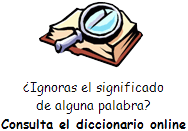| Try These Activities for English
Speaking Practice Have you ever recorded
yourself on an electronic device while speaking English? If so, what
kinds of things did you notice?
Recording yourself gives you the chance to listen to and critique your
English speaking skills. You can take note of things like sentence
structure, word choice, pronunciation and fluency. This can give you a
better idea of what your strengths are and which areas need more work.
Today on Education Tips, we will talk about two recording activities you
can do to strengthen your speaking skills.
Retelling a story
The first activity involves narrative storytelling.
William Stout teaches at Georgetown University in Washington, D.C. His
specialty is teaching English as a foreign language. He says some
speaking activities do not give an accurate picture of your true
language skills. But narrative storytelling does.
Narrative storytelling is the retelling of a story. It can be a short
piece of fiction, such as a program from the VOA Learning English series
American Stories, or it can be the retelling of a news event. Or you can
talk about something that happened in your own life.
Stout explains that narrative storytelling frees
your mind from forming complex ideas, which lets you speak more easily
in English. On the other hand, he notes, an activity requiring your
opinion can slow you down. That is because it forces you to think about
your ideas as you say them.
For the narrative storytelling activity, Stout says try to provide as
many details as possible and aim for a recording of three minutes or
fewer.
“Don’t just say, ‘I studied at the library.’ Say, ‘I walked into the
library and I thought about where I should sit. And most of the seats
were taken, so I looked around and I finally found a spot, but it was
near the window. But it was chilly, so I had to keep my coat on.’
Something like that."
The goal in giving such detail is not to fill the time, but to speak at
a faster speed because you do not have to stop and think of each idea
separately.
Before the activity, Stout suggests speaking out loud to yourself a few
times to make sure you have your main points in mind.
When listening to the recording, do not expect to find all or even most
grammar or vocabulary mistakes, he says. But you can easily find some
mistakes, such as wrong verb tenses, verb endings and noun endings. You
can also take note of your language fluency. Other things are harder to
do yourself, like recognizing and critiquing individual sounds from
words.
After the first recording, Stout says, record yourself telling the same
story at least once more and take note of your progress. But avoid
memorizing your speech.
Giving, getting directions
The second activity involves giving and getting directions.
Wynter Oshiberu teaches English in the Washington, D.C. area. She works
for the International Center for Language Studies and Montgomery
Community College. She is also a volunteer English teacher for a
nonprofit group called Paper Airplanes.
Oshiberu says giving directions is a real-world skill and one you can
use almost anywhere. And you can train by yourself if you do not have
people to speak English with.
The first step in the activity is to choose a starting point and a
destination.
For the starting point, she says, choose a place that you know well,
like your home or a nearby bus or train station.
For the destination, choose a place you need to travel to more often,
such as the supermarket, train station, your work place or favorite
eating place.
Then, record yourself giving the directions. The recording should not be
longer than one minute.
Oshiberu says the activity is a good way to employ the imperative form,
also known as the command form. In English, the command form begins with
a verb, as in, “Turn right when you reach the doctor’s office.”
Note however that, when giving directions, native English speakers
sometimes add the subject “you” to the start of a command.
“The correct way, if you’re telling someone what to do, you might want
to start off with, ‘First, you go right on 7th Street' or 'First, you
turn right on 7th Street’ or just ‘Turn right on 7th Street.’”
Avoid adding the modal verb “can,” which Oshiberu notes is a common
mistake of English learners. For example, avoid saying something like,
“You can turn right on 7th Street.”
When listening to your recording, take note of your subject-verb
agreement, use of prepositions, use of the command form and
pronunciation.
You can even try using your own directions yourself, Oshiberu adds. In
other words, play the recording as you walk from the starting point to
the destination. This will let you know whether your directions were
clear and accurate.
Another way to practice getting directions is to use your phone’s GPS or
global positioning system.
To do this, she suggests changing the language settings on the GPS
system to English. Then, choose a destination to get walking directions
to, a place that is not too far away. Set the GPS so you can listen to
the directions and then follow the directions to the destination.
Oshiberu says listening to directions is useful because, when you give
directions to a real person, they are probably going to ask questions.
That brings our program to a close. As you try these speaking activities,
remember to relax and enjoy the process. And don’t forget to celebrate
the things you do well! Let us know how it goes. |
![]() ).
Utiliza el botón derecho del ratón y "guardar enlace" para descargar el
fichero a tu PC, tablet, Smartphone, etc.
).
Utiliza el botón derecho del ratón y "guardar enlace" para descargar el
fichero a tu PC, tablet, Smartphone, etc.![]() Escucha el audio
Escucha el audio



